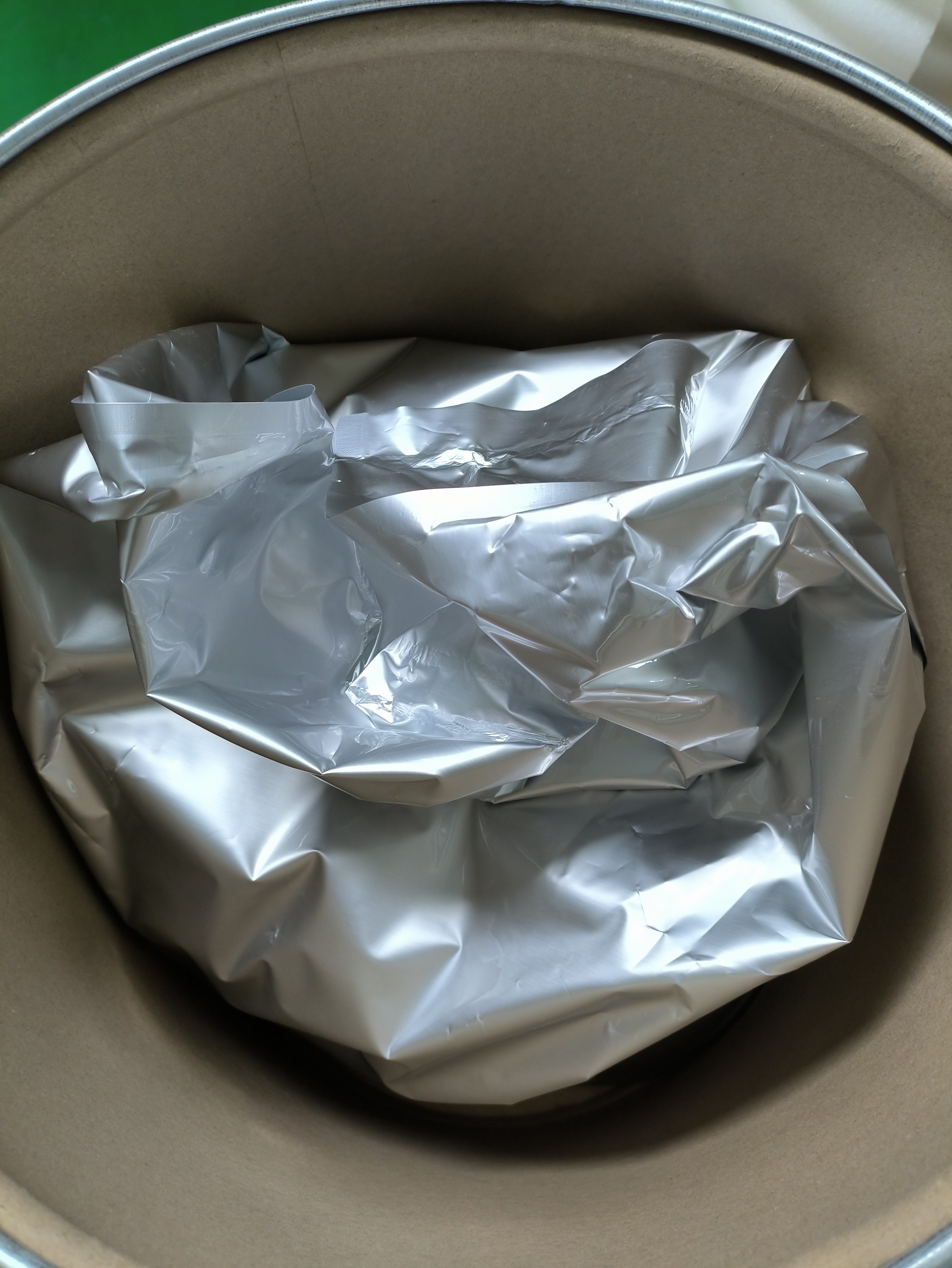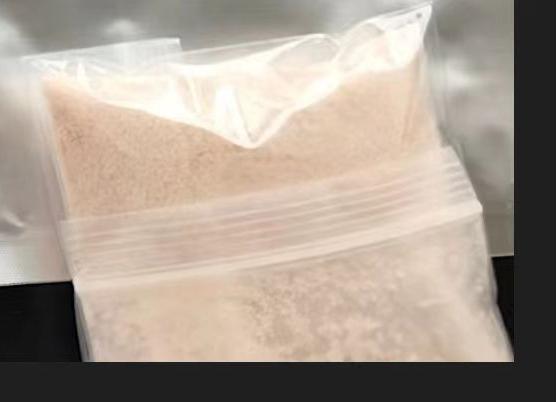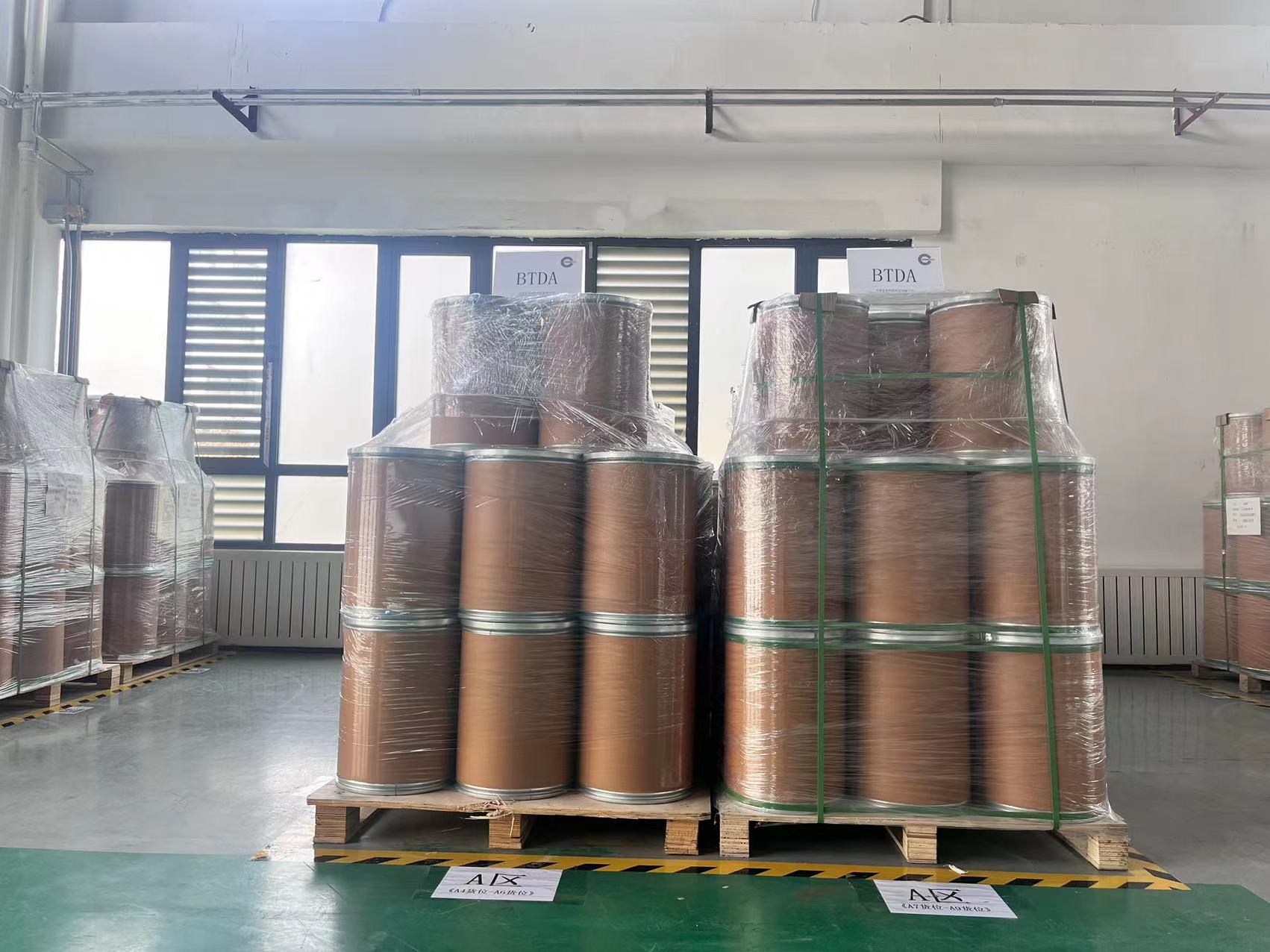Amino Acids, Proteins and Nucleic Acids
Alcohols, Phenols and Ethers
Organo Silicon Compounds
Halides
Heterocyclic Compounds
Organic Fluorine Compounds
Nitrogen Compounds
Organometallic Compounds
Esters
Hydrocarbons
Aromatic Compounds
Carboxylic Acids and Derivatives
Nitriles
Organometalate
Aldehydes, Ketones and Quinones
Carbohydrate
CAS:14108-16-8
Molecular Formula:C13H12ClN3O
Alias
More Information
Benzamide,4-Amino-N-(4-Amino-2-Chlorophenyl)-;4,4'-Diamino-2'-Chloro-Benzanilide; 4-Amino-N-(4'-Amino-2-Chlorophenyi)Benzamide; 4-Amino-N-(4-Amino-2-Chlorophenyl)Benzamide; 4,4'-Diamino-2'-Chloro-Benzanilide
CNY 0.0 Million
100-500 People
Manufacturer
Manufacturing
| Product Photo | Specification | Grade | Max Capacity | Certificates | Package | |
|---|---|---|---|---|---|---|
|
|
||||||
| - | - | - | - |
Main products:
2-Chloro-4,4-Diaminobenzanilide
/3,3',4,4'-Benzophenonetetracarboxylic Dianhydride
/3,4'-Oxydianiline
/4,4'-(Hexafluoroisopropylidene)Diphthalic Anhydride
/3,3',4,4'-Biphenyltetracarboxylic Dianhydride
/2,2'-Dimethyl[1,1'-Biphenyl]-4,4'-Diamine
/2,2'-二(三氟甲基)-(1,1'-二苯基)-4,4'-二胺
/2,3,3',4'-Biphenyl Tetracarboxylic Dianhydride
/2,3,3',4'-二苯醚四甲酸二酐
/4,4'-联苯醚二酐
/2,2-Bis(3-Amino-4-Hydroxyphenyl)Hexafluoropropane
/2,2-Bis(3-Amino-4-Hydroxyphenyl)Propane
/Bis(3-Amino-4-Hydroxyphenyl) Sulfone###3,3'-Diamino-4,4'-Dihydroxydiphenyl Sulfone
/4,4'-(4,4'-Isopropylidenediphenoxy)Bis(Phthalic Anhydride)
/4,4'-(4,4'-Isopropylidenediphenyl-1,1'-Diyldioxy)Dianiline
/2,2-Bis[4-(4-Aminophenoxy)Phenyl]Hexafluoropropane
/2-Amino-5-(4-Amino-3-Hydroxyphenyl)Phenol###3,3'-Dihydroxybenzidine
/4,4'-对苯二氧双邻苯二甲酸酐
/1,3-Bis(4-Aminophenoxy)Benzene
/1,4-双(4-氨基苯氧基)苯
/4,4'-双(4-氨基苯氧基)联苯
/4,4'-双(3-氨基苯氧基)联苯
/4,4'-Bis(3-Aminophenoxy)Diphenyl Sulfone
/1,2,4,5-Cyclohexanetetracarboxylic Dianhydride
/Cyclobutane-1,2,3,4-Tetracarboxylic Dianhydride
/2-(4-氨基苯基)-5-氨基苯并咪唑
/2-(4-氨基苯基)-5-氨基苯并恶唑
/2-(3-氨基苯基)-5-氨基苯并咪唑
/2,2'-双(三氟甲基)-4,4'-二氨基苯基醚
/4,4'-二氨基联苯-2,2'-二羧酸
/4,4-氯甲酰基苯醚
/9,9-双(3-氟-4-氨基苯基)芴
/9,9-Bis(4-Aminophenyl)Fluorene
/(4-邻苯二甲酸酐)甲酰氧基-4-邻苯二甲酸酯
/[4-(4-氨基苯甲酰基)氧苯基]4-氨基
苯甲酸酯
/双(4-氨基苯基)对苯二甲酸酯
/双[(3,4-二酸酐)苯基]对苯二甲酸酯
/对-亚苯基-双苯偏三酸酯二酐
/对-亚联苯基-双苯偏三酸酯二酐
/3,3',4,4'-Diphenylsulfonetetracarboxylic Dianhydride
/4,4'-二氨基苯砜
/1,4,5,8-Naphthalenetetracarboxylic Dianhydride
/N,N'-(2,2'-双(三氟甲基)-[1,1'-二联苯基]-4,4'-二基)双(4-氨基苯甲酰胺)
/4-Phenylethynylphthalic Anhydride
/Bisphenol Af
/双酚AF二酐
/2,2-Bis(4-Aminophenyl)Hexafluoropropane
/N,N'-[[2,2,2-三氟-1-(三氟甲基)亚乙基]双(6-羟基-3,1-亚苯基)]双[3-氨基苯甲酰胺]
/N,N'-[[2,2,2-三氟-1-(三氟甲基)亚乙基]双(6-羟基-3,1-亚苯基)]双[4-氨基苯甲酰胺]
/2,4,6-Trimethylbenzene-1,3-Diamine###2,4,6-Trimethyl-1,3-Phenylenediamine
/茚二胺
/3,3'-Diaminobenzidine
/4-叔丁氧基苯乙烯
/N-[4-[4-[(1,3-二氧-2-苯并呋喃-5-羰基)氨基]-2-(三氟甲基)苯基]-3-(三氟甲基)苯基]-1,3-二氧-2-苯并呋喃-5-甲酰胺
/1,2-双(4-氨基苯氧基)乙烷
/二乙二醇(4-三甲酸酐)
/6FCDA
/5-Isobenzofurancarboxylic acid, 1,3-Dihydro-1,3-Dioxo-, 5,5'-[(1-Methylethylidene)di-4,1-Phenylene] Ester
/5-Isobenzofurancarboxylic acid, 1,3-Dihydro-1,3-Dioxo-, 2,6-Naphthalenediyl Ester (9CI)
/9,9-Dimethyl-9H-Fluorene-2,7-Diamine
/3,3',5,5'-Tetramethylbenzidine
/4-[1-(4-Aminophenyl)Cyclohexyl]Aniline
/Phenol, 4,4'-Cyclohexylidenebis[2-Amino-
/1,3-Isobenzofurandione, 4-[(1,3-Dihydro-1,3-Dioxo-5-Isobenzofuranyl)Carbonyl]-
/3-(Carboxymethyl)-1,2,4-Cyclopentanetricarboxylic acid 1,4:2,3-Dianhydride
/m-Dbahs
/Phenol, 4,4'-(1,3-Dimethylbutylidene)bis[2-Amino- (9CI)
/9,9-BIS(3-Amino-4-Hydroxyphenyl)Fluorene
/[1,1':4',1''-Terphenyl]-4,4''-Diamine, 2,2''-bis(Trifluoromethyl)-
/3,3',5,5'-Tetrakis(Methoxymethyl)-[1,1'-Biphenyl]-4,4'-diol
/[2]Benzofuro[5,6-f][2]Benzofuran-1,3,6,8-Tetrone
/1,3,5-TRIS(4-Aminophenoxy)Benzene (135Tapob)
/Bicyclo[2.2.2]Oct-7-Ene-2,3,5,6-Tetracarboxylic Acid Dianhydride
/5,5'-Methylenebis(2-Aminobenzoic Acid)
/Dicyclohexyl-3,4,3',4'-Tetracarboxylic Dianhydride
/N2-(4-Aminophenyl)-2,5-Pyridinediamine
/1,3-Isobenzofurandione, 4,4'-[1,4-Phenylenebis(oxy)]bis-
CAS:216454-90-9
Molecular Formula:C15H16N2
Alias
More Information
9H-Fluorene-2,7-Diamine, 9,9-Dimethyl
CNY 0.0 Million
100-500 People
Manufacturer
Manufacturing
| Product Photo | Specification | Grade | Max Capacity | Certificates | Package | |
|---|---|---|---|---|---|---|
|
|
||||||
| - | - | - | - |
Main products:
9,9-Dimethyl-9H-Fluorene-2,7-Diamine
/3,3',4,4'-Benzophenonetetracarboxylic Dianhydride
/3,4'-Oxydianiline
/4,4'-(Hexafluoroisopropylidene)Diphthalic Anhydride
/3,3',4,4'-Biphenyltetracarboxylic Dianhydride
/2,2'-Dimethyl[1,1'-Biphenyl]-4,4'-Diamine
/2,2'-二(三氟甲基)-(1,1'-二苯基)-4,4'-二胺
/2,3,3',4'-Biphenyl Tetracarboxylic Dianhydride
/2,3,3',4'-二苯醚四甲酸二酐
/4,4'-联苯醚二酐
/2,2-Bis(3-Amino-4-Hydroxyphenyl)Hexafluoropropane
/2,2-Bis(3-Amino-4-Hydroxyphenyl)Propane
/Bis(3-Amino-4-Hydroxyphenyl) Sulfone###3,3'-Diamino-4,4'-Dihydroxydiphenyl Sulfone
/4,4'-(4,4'-Isopropylidenediphenoxy)Bis(Phthalic Anhydride)
/4,4'-(4,4'-Isopropylidenediphenyl-1,1'-Diyldioxy)Dianiline
/2,2-Bis[4-(4-Aminophenoxy)Phenyl]Hexafluoropropane
/2-Amino-5-(4-Amino-3-Hydroxyphenyl)Phenol###3,3'-Dihydroxybenzidine
/4,4'-对苯二氧双邻苯二甲酸酐
/1,3-Bis(4-Aminophenoxy)Benzene
/1,4-双(4-氨基苯氧基)苯
/4,4'-双(4-氨基苯氧基)联苯
/4,4'-双(3-氨基苯氧基)联苯
/4,4'-Bis(3-Aminophenoxy)Diphenyl Sulfone
/1,2,4,5-Cyclohexanetetracarboxylic Dianhydride
/Cyclobutane-1,2,3,4-Tetracarboxylic Dianhydride
/2-(4-氨基苯基)-5-氨基苯并咪唑
/2-(4-氨基苯基)-5-氨基苯并恶唑
/2-(3-氨基苯基)-5-氨基苯并咪唑
/2,2'-双(三氟甲基)-4,4'-二氨基苯基醚
/4,4'-二氨基联苯-2,2'-二羧酸
/4,4-氯甲酰基苯醚
/9,9-双(3-氟-4-氨基苯基)芴
/9,9-Bis(4-Aminophenyl)Fluorene
/(4-邻苯二甲酸酐)甲酰氧基-4-邻苯二甲酸酯
/[4-(4-氨基苯甲酰基)氧苯基]4-氨基
苯甲酸酯
/双(4-氨基苯基)对苯二甲酸酯
/双[(3,4-二酸酐)苯基]对苯二甲酸酯
/对-亚苯基-双苯偏三酸酯二酐
/对-亚联苯基-双苯偏三酸酯二酐
/3,3',4,4'-Diphenylsulfonetetracarboxylic Dianhydride
/4,4'-二氨基苯砜
/1,4,5,8-Naphthalenetetracarboxylic Dianhydride
/N,N'-(2,2'-双(三氟甲基)-[1,1'-二联苯基]-4,4'-二基)双(4-氨基苯甲酰胺)
/4-Phenylethynylphthalic Anhydride
/Bisphenol Af
/双酚AF二酐
/2,2-Bis(4-Aminophenyl)Hexafluoropropane
/N,N'-[[2,2,2-三氟-1-(三氟甲基)亚乙基]双(6-羟基-3,1-亚苯基)]双[3-氨基苯甲酰胺]
/N,N'-[[2,2,2-三氟-1-(三氟甲基)亚乙基]双(6-羟基-3,1-亚苯基)]双[4-氨基苯甲酰胺]
/2,4,6-Trimethylbenzene-1,3-Diamine###2,4,6-Trimethyl-1,3-Phenylenediamine
/茚二胺
/3,3'-Diaminobenzidine
/4-叔丁氧基苯乙烯
/N-[4-[4-[(1,3-二氧-2-苯并呋喃-5-羰基)氨基]-2-(三氟甲基)苯基]-3-(三氟甲基)苯基]-1,3-二氧-2-苯并呋喃-5-甲酰胺
/1,2-双(4-氨基苯氧基)乙烷
/二乙二醇(4-三甲酸酐)
/6FCDA
/5-Isobenzofurancarboxylic acid, 1,3-Dihydro-1,3-Dioxo-, 5,5'-[(1-Methylethylidene)di-4,1-Phenylene] Ester
/5-Isobenzofurancarboxylic acid, 1,3-Dihydro-1,3-Dioxo-, 2,6-Naphthalenediyl Ester (9CI)
/3,3',5,5'-Tetramethylbenzidine
/4-[1-(4-Aminophenyl)Cyclohexyl]Aniline
/Phenol, 4,4'-Cyclohexylidenebis[2-Amino-
/1,3-Isobenzofurandione, 4-[(1,3-Dihydro-1,3-Dioxo-5-Isobenzofuranyl)Carbonyl]-
/3-(Carboxymethyl)-1,2,4-Cyclopentanetricarboxylic acid 1,4:2,3-Dianhydride
/m-Dbahs
/Phenol, 4,4'-(1,3-Dimethylbutylidene)bis[2-Amino- (9CI)
/9,9-BIS(3-Amino-4-Hydroxyphenyl)Fluorene
/2-Chloro-4,4-Diaminobenzanilide
/[1,1':4',1''-Terphenyl]-4,4''-Diamine, 2,2''-bis(Trifluoromethyl)-
/3,3',5,5'-Tetrakis(Methoxymethyl)-[1,1'-Biphenyl]-4,4'-diol
/[2]Benzofuro[5,6-f][2]Benzofuran-1,3,6,8-Tetrone
/1,3,5-TRIS(4-Aminophenoxy)Benzene (135Tapob)
/Bicyclo[2.2.2]Oct-7-Ene-2,3,5,6-Tetracarboxylic Acid Dianhydride
/5,5'-Methylenebis(2-Aminobenzoic Acid)
/Dicyclohexyl-3,4,3',4'-Tetracarboxylic Dianhydride
/N2-(4-Aminophenyl)-2,5-Pyridinediamine
/1,3-Isobenzofurandione, 4,4'-[1,4-Phenylenebis(oxy)]bis-
CAS:7330-46-3
Molecular Formula:C15H14N2O4
Alias
More Information
Akosbbs-00003100; Chembrdg-BB5180504; 6,6'-Diamino-3,3'-Methanediyl-di-Benzoicacid; MBAA; Methylenebis(Anthranilicacid); 5,5'-Methylenedianthranilicacid; 3,3'-Methylenebis(6-Aminobenzoicacid); 5,5'-Methylenebis(Anthanilicacid)
CNY 0.0 Million
100-500 People
Manufacturer
Manufacturing
| Product Photo | Specification | Grade | Max Capacity | Certificates | Package | |
|---|---|---|---|---|---|---|
|
|
||||||
| - | - | - | - |
Main products:
5,5'-Methylenebis(2-Aminobenzoic Acid)
/3,3',4,4'-Benzophenonetetracarboxylic Dianhydride
/3,4'-Oxydianiline
/4,4'-(Hexafluoroisopropylidene)Diphthalic Anhydride
/3,3',4,4'-Biphenyltetracarboxylic Dianhydride
/2,2'-Dimethyl[1,1'-Biphenyl]-4,4'-Diamine
/2,2'-二(三氟甲基)-(1,1'-二苯基)-4,4'-二胺
/2,3,3',4'-Biphenyl Tetracarboxylic Dianhydride
/2,3,3',4'-二苯醚四甲酸二酐
/4,4'-联苯醚二酐
/2,2-Bis(3-Amino-4-Hydroxyphenyl)Hexafluoropropane
/2,2-Bis(3-Amino-4-Hydroxyphenyl)Propane
/Bis(3-Amino-4-Hydroxyphenyl) Sulfone###3,3'-Diamino-4,4'-Dihydroxydiphenyl Sulfone
/4,4'-(4,4'-Isopropylidenediphenoxy)Bis(Phthalic Anhydride)
/4,4'-(4,4'-Isopropylidenediphenyl-1,1'-Diyldioxy)Dianiline
/2,2-Bis[4-(4-Aminophenoxy)Phenyl]Hexafluoropropane
/2-Amino-5-(4-Amino-3-Hydroxyphenyl)Phenol###3,3'-Dihydroxybenzidine
/4,4'-对苯二氧双邻苯二甲酸酐
/1,3-Bis(4-Aminophenoxy)Benzene
/1,4-双(4-氨基苯氧基)苯
/4,4'-双(4-氨基苯氧基)联苯
/4,4'-双(3-氨基苯氧基)联苯
/4,4'-Bis(3-Aminophenoxy)Diphenyl Sulfone
/1,2,4,5-Cyclohexanetetracarboxylic Dianhydride
/Cyclobutane-1,2,3,4-Tetracarboxylic Dianhydride
/2-(4-氨基苯基)-5-氨基苯并咪唑
/2-(4-氨基苯基)-5-氨基苯并恶唑
/2-(3-氨基苯基)-5-氨基苯并咪唑
/2,2'-双(三氟甲基)-4,4'-二氨基苯基醚
/4,4'-二氨基联苯-2,2'-二羧酸
/4,4-氯甲酰基苯醚
/9,9-双(3-氟-4-氨基苯基)芴
/9,9-Bis(4-Aminophenyl)Fluorene
/(4-邻苯二甲酸酐)甲酰氧基-4-邻苯二甲酸酯
/[4-(4-氨基苯甲酰基)氧苯基]4-氨基
苯甲酸酯
/双(4-氨基苯基)对苯二甲酸酯
/双[(3,4-二酸酐)苯基]对苯二甲酸酯
/对-亚苯基-双苯偏三酸酯二酐
/对-亚联苯基-双苯偏三酸酯二酐
/3,3',4,4'-Diphenylsulfonetetracarboxylic Dianhydride
/4,4'-二氨基苯砜
/1,4,5,8-Naphthalenetetracarboxylic Dianhydride
/N,N'-(2,2'-双(三氟甲基)-[1,1'-二联苯基]-4,4'-二基)双(4-氨基苯甲酰胺)
/4-Phenylethynylphthalic Anhydride
/Bisphenol Af
/双酚AF二酐
/2,2-Bis(4-Aminophenyl)Hexafluoropropane
/N,N'-[[2,2,2-三氟-1-(三氟甲基)亚乙基]双(6-羟基-3,1-亚苯基)]双[3-氨基苯甲酰胺]
/N,N'-[[2,2,2-三氟-1-(三氟甲基)亚乙基]双(6-羟基-3,1-亚苯基)]双[4-氨基苯甲酰胺]
/2,4,6-Trimethylbenzene-1,3-Diamine###2,4,6-Trimethyl-1,3-Phenylenediamine
/茚二胺
/3,3'-Diaminobenzidine
/4-叔丁氧基苯乙烯
/N-[4-[4-[(1,3-二氧-2-苯并呋喃-5-羰基)氨基]-2-(三氟甲基)苯基]-3-(三氟甲基)苯基]-1,3-二氧-2-苯并呋喃-5-甲酰胺
/1,2-双(4-氨基苯氧基)乙烷
/二乙二醇(4-三甲酸酐)
/6FCDA
/5-Isobenzofurancarboxylic acid, 1,3-Dihydro-1,3-Dioxo-, 5,5'-[(1-Methylethylidene)di-4,1-Phenylene] Ester
/5-Isobenzofurancarboxylic acid, 1,3-Dihydro-1,3-Dioxo-, 2,6-Naphthalenediyl Ester (9CI)
/9,9-Dimethyl-9H-Fluorene-2,7-Diamine
/3,3',5,5'-Tetramethylbenzidine
/4-[1-(4-Aminophenyl)Cyclohexyl]Aniline
/Phenol, 4,4'-Cyclohexylidenebis[2-Amino-
/1,3-Isobenzofurandione, 4-[(1,3-Dihydro-1,3-Dioxo-5-Isobenzofuranyl)Carbonyl]-
/3-(Carboxymethyl)-1,2,4-Cyclopentanetricarboxylic acid 1,4:2,3-Dianhydride
/m-Dbahs
/Phenol, 4,4'-(1,3-Dimethylbutylidene)bis[2-Amino- (9CI)
/9,9-BIS(3-Amino-4-Hydroxyphenyl)Fluorene
/2-Chloro-4,4-Diaminobenzanilide
/[1,1':4',1''-Terphenyl]-4,4''-Diamine, 2,2''-bis(Trifluoromethyl)-
/3,3',5,5'-Tetrakis(Methoxymethyl)-[1,1'-Biphenyl]-4,4'-diol
/[2]Benzofuro[5,6-f][2]Benzofuran-1,3,6,8-Tetrone
/1,3,5-TRIS(4-Aminophenoxy)Benzene (135Tapob)
/Bicyclo[2.2.2]Oct-7-Ene-2,3,5,6-Tetracarboxylic Acid Dianhydride
/Dicyclohexyl-3,4,3',4'-Tetracarboxylic Dianhydride
/N2-(4-Aminophenyl)-2,5-Pyridinediamine
/1,3-Isobenzofurandione, 4,4'-[1,4-Phenylenebis(oxy)]bis-
CAS:102852-92-6
Molecular Formula:C24H21N3O3
Alias
More Information
1,3,5-tris(p-Aminophenoxy)Benzene; 1,3,5-Tris-(4-Aethoxy-Phenyl)-Hexahydro-[1,3,5]Triazin; 1,3,5-TRIS(4-Aminophenoxy)Benzene; 1,3,5-tris(4'-Aminophenyloxy)Benzene; 1,3,5-tris-(4-Ethoxy-Phenyl)-Hexahydro-[1,3,5]Triazine
CNY 0.0 Million
100-500 People
Manufacturer
Manufacturing
| Product Photo | Specification | Grade | Max Capacity | Certificates | Package | |
|---|---|---|---|---|---|---|
|
|
||||||
| - | - | - | - |
Main products:
1,3,5-TRIS(4-Aminophenoxy)Benzene (135Tapob)
/3,3',4,4'-Benzophenonetetracarboxylic Dianhydride
/3,4'-Oxydianiline
/4,4'-(Hexafluoroisopropylidene)Diphthalic Anhydride
/3,3',4,4'-Biphenyltetracarboxylic Dianhydride
/2,2'-Dimethyl[1,1'-Biphenyl]-4,4'-Diamine
/2,2'-二(三氟甲基)-(1,1'-二苯基)-4,4'-二胺
/2,3,3',4'-Biphenyl Tetracarboxylic Dianhydride
/2,3,3',4'-二苯醚四甲酸二酐
/4,4'-联苯醚二酐
/2,2-Bis(3-Amino-4-Hydroxyphenyl)Hexafluoropropane
/2,2-Bis(3-Amino-4-Hydroxyphenyl)Propane
/Bis(3-Amino-4-Hydroxyphenyl) Sulfone###3,3'-Diamino-4,4'-Dihydroxydiphenyl Sulfone
/4,4'-(4,4'-Isopropylidenediphenoxy)Bis(Phthalic Anhydride)
/4,4'-(4,4'-Isopropylidenediphenyl-1,1'-Diyldioxy)Dianiline
/2,2-Bis[4-(4-Aminophenoxy)Phenyl]Hexafluoropropane
/2-Amino-5-(4-Amino-3-Hydroxyphenyl)Phenol###3,3'-Dihydroxybenzidine
/4,4'-对苯二氧双邻苯二甲酸酐
/1,3-Bis(4-Aminophenoxy)Benzene
/1,4-双(4-氨基苯氧基)苯
/4,4'-双(4-氨基苯氧基)联苯
/4,4'-双(3-氨基苯氧基)联苯
/4,4'-Bis(3-Aminophenoxy)Diphenyl Sulfone
/1,2,4,5-Cyclohexanetetracarboxylic Dianhydride
/Cyclobutane-1,2,3,4-Tetracarboxylic Dianhydride
/2-(4-氨基苯基)-5-氨基苯并咪唑
/2-(4-氨基苯基)-5-氨基苯并恶唑
/2-(3-氨基苯基)-5-氨基苯并咪唑
/2,2'-双(三氟甲基)-4,4'-二氨基苯基醚
/4,4'-二氨基联苯-2,2'-二羧酸
/4,4-氯甲酰基苯醚
/9,9-双(3-氟-4-氨基苯基)芴
/9,9-Bis(4-Aminophenyl)Fluorene
/(4-邻苯二甲酸酐)甲酰氧基-4-邻苯二甲酸酯
/[4-(4-氨基苯甲酰基)氧苯基]4-氨基
苯甲酸酯
/双(4-氨基苯基)对苯二甲酸酯
/双[(3,4-二酸酐)苯基]对苯二甲酸酯
/对-亚苯基-双苯偏三酸酯二酐
/对-亚联苯基-双苯偏三酸酯二酐
/3,3',4,4'-Diphenylsulfonetetracarboxylic Dianhydride
/4,4'-二氨基苯砜
/1,4,5,8-Naphthalenetetracarboxylic Dianhydride
/N,N'-(2,2'-双(三氟甲基)-[1,1'-二联苯基]-4,4'-二基)双(4-氨基苯甲酰胺)
/4-Phenylethynylphthalic Anhydride
/Bisphenol Af
/双酚AF二酐
/2,2-Bis(4-Aminophenyl)Hexafluoropropane
/N,N'-[[2,2,2-三氟-1-(三氟甲基)亚乙基]双(6-羟基-3,1-亚苯基)]双[3-氨基苯甲酰胺]
/N,N'-[[2,2,2-三氟-1-(三氟甲基)亚乙基]双(6-羟基-3,1-亚苯基)]双[4-氨基苯甲酰胺]
/2,4,6-Trimethylbenzene-1,3-Diamine###2,4,6-Trimethyl-1,3-Phenylenediamine
/茚二胺
/3,3'-Diaminobenzidine
/4-叔丁氧基苯乙烯
/N-[4-[4-[(1,3-二氧-2-苯并呋喃-5-羰基)氨基]-2-(三氟甲基)苯基]-3-(三氟甲基)苯基]-1,3-二氧-2-苯并呋喃-5-甲酰胺
/1,2-双(4-氨基苯氧基)乙烷
/二乙二醇(4-三甲酸酐)
/6FCDA
/5-Isobenzofurancarboxylic acid, 1,3-Dihydro-1,3-Dioxo-, 5,5'-[(1-Methylethylidene)di-4,1-Phenylene] Ester
/5-Isobenzofurancarboxylic acid, 1,3-Dihydro-1,3-Dioxo-, 2,6-Naphthalenediyl Ester (9CI)
/9,9-Dimethyl-9H-Fluorene-2,7-Diamine
/3,3',5,5'-Tetramethylbenzidine
/4-[1-(4-Aminophenyl)Cyclohexyl]Aniline
/Phenol, 4,4'-Cyclohexylidenebis[2-Amino-
/1,3-Isobenzofurandione, 4-[(1,3-Dihydro-1,3-Dioxo-5-Isobenzofuranyl)Carbonyl]-
/3-(Carboxymethyl)-1,2,4-Cyclopentanetricarboxylic acid 1,4:2,3-Dianhydride
/m-Dbahs
/Phenol, 4,4'-(1,3-Dimethylbutylidene)bis[2-Amino- (9CI)
/9,9-BIS(3-Amino-4-Hydroxyphenyl)Fluorene
/2-Chloro-4,4-Diaminobenzanilide
/[1,1':4',1''-Terphenyl]-4,4''-Diamine, 2,2''-bis(Trifluoromethyl)-
/3,3',5,5'-Tetrakis(Methoxymethyl)-[1,1'-Biphenyl]-4,4'-diol
/[2]Benzofuro[5,6-f][2]Benzofuran-1,3,6,8-Tetrone
/Bicyclo[2.2.2]Oct-7-Ene-2,3,5,6-Tetracarboxylic Acid Dianhydride
/5,5'-Methylenebis(2-Aminobenzoic Acid)
/Dicyclohexyl-3,4,3',4'-Tetracarboxylic Dianhydride
/N2-(4-Aminophenyl)-2,5-Pyridinediamine
/1,3-Isobenzofurandione, 4,4'-[1,4-Phenylenebis(oxy)]bis-
CAS:3711-01-1
Molecular Formula:C14H4O6
CNY 0.0 Million
100-500 People
Manufacturer
Manufacturing
| Product Photo | Specification | Grade | Max Capacity | Certificates | Package | |
|---|---|---|---|---|---|---|
|
|
||||||
| - | - | - | - |
Main products:
[2]Benzofuro[5,6-f][2]Benzofuran-1,3,6,8-Tetrone
/3,3',4,4'-Benzophenonetetracarboxylic Dianhydride
/3,4'-Oxydianiline
/4,4'-(Hexafluoroisopropylidene)Diphthalic Anhydride
/3,3',4,4'-Biphenyltetracarboxylic Dianhydride
/2,2'-Dimethyl[1,1'-Biphenyl]-4,4'-Diamine
/2,2'-二(三氟甲基)-(1,1'-二苯基)-4,4'-二胺
/2,3,3',4'-Biphenyl Tetracarboxylic Dianhydride
/2,3,3',4'-二苯醚四甲酸二酐
/4,4'-联苯醚二酐
/2,2-Bis(3-Amino-4-Hydroxyphenyl)Hexafluoropropane
/2,2-Bis(3-Amino-4-Hydroxyphenyl)Propane
/Bis(3-Amino-4-Hydroxyphenyl) Sulfone###3,3'-Diamino-4,4'-Dihydroxydiphenyl Sulfone
/4,4'-(4,4'-Isopropylidenediphenoxy)Bis(Phthalic Anhydride)
/4,4'-(4,4'-Isopropylidenediphenyl-1,1'-Diyldioxy)Dianiline
/2,2-Bis[4-(4-Aminophenoxy)Phenyl]Hexafluoropropane
/2-Amino-5-(4-Amino-3-Hydroxyphenyl)Phenol###3,3'-Dihydroxybenzidine
/4,4'-对苯二氧双邻苯二甲酸酐
/1,3-Bis(4-Aminophenoxy)Benzene
/1,4-双(4-氨基苯氧基)苯
/4,4'-双(4-氨基苯氧基)联苯
/4,4'-双(3-氨基苯氧基)联苯
/4,4'-Bis(3-Aminophenoxy)Diphenyl Sulfone
/1,2,4,5-Cyclohexanetetracarboxylic Dianhydride
/Cyclobutane-1,2,3,4-Tetracarboxylic Dianhydride
/2-(4-氨基苯基)-5-氨基苯并咪唑
/2-(4-氨基苯基)-5-氨基苯并恶唑
/2-(3-氨基苯基)-5-氨基苯并咪唑
/2,2'-双(三氟甲基)-4,4'-二氨基苯基醚
/4,4'-二氨基联苯-2,2'-二羧酸
/4,4-氯甲酰基苯醚
/9,9-双(3-氟-4-氨基苯基)芴
/9,9-Bis(4-Aminophenyl)Fluorene
/(4-邻苯二甲酸酐)甲酰氧基-4-邻苯二甲酸酯
/[4-(4-氨基苯甲酰基)氧苯基]4-氨基
苯甲酸酯
/双(4-氨基苯基)对苯二甲酸酯
/双[(3,4-二酸酐)苯基]对苯二甲酸酯
/对-亚苯基-双苯偏三酸酯二酐
/对-亚联苯基-双苯偏三酸酯二酐
/3,3',4,4'-Diphenylsulfonetetracarboxylic Dianhydride
/4,4'-二氨基苯砜
/1,4,5,8-Naphthalenetetracarboxylic Dianhydride
/N,N'-(2,2'-双(三氟甲基)-[1,1'-二联苯基]-4,4'-二基)双(4-氨基苯甲酰胺)
/4-Phenylethynylphthalic Anhydride
/Bisphenol Af
/双酚AF二酐
/2,2-Bis(4-Aminophenyl)Hexafluoropropane
/N,N'-[[2,2,2-三氟-1-(三氟甲基)亚乙基]双(6-羟基-3,1-亚苯基)]双[3-氨基苯甲酰胺]
/N,N'-[[2,2,2-三氟-1-(三氟甲基)亚乙基]双(6-羟基-3,1-亚苯基)]双[4-氨基苯甲酰胺]
/2,4,6-Trimethylbenzene-1,3-Diamine###2,4,6-Trimethyl-1,3-Phenylenediamine
/茚二胺
/3,3'-Diaminobenzidine
/4-叔丁氧基苯乙烯
/N-[4-[4-[(1,3-二氧-2-苯并呋喃-5-羰基)氨基]-2-(三氟甲基)苯基]-3-(三氟甲基)苯基]-1,3-二氧-2-苯并呋喃-5-甲酰胺
/1,2-双(4-氨基苯氧基)乙烷
/二乙二醇(4-三甲酸酐)
/6FCDA
/5-Isobenzofurancarboxylic acid, 1,3-Dihydro-1,3-Dioxo-, 5,5'-[(1-Methylethylidene)di-4,1-Phenylene] Ester
/5-Isobenzofurancarboxylic acid, 1,3-Dihydro-1,3-Dioxo-, 2,6-Naphthalenediyl Ester (9CI)
/9,9-Dimethyl-9H-Fluorene-2,7-Diamine
/3,3',5,5'-Tetramethylbenzidine
/4-[1-(4-Aminophenyl)Cyclohexyl]Aniline
/Phenol, 4,4'-Cyclohexylidenebis[2-Amino-
/1,3-Isobenzofurandione, 4-[(1,3-Dihydro-1,3-Dioxo-5-Isobenzofuranyl)Carbonyl]-
/3-(Carboxymethyl)-1,2,4-Cyclopentanetricarboxylic acid 1,4:2,3-Dianhydride
/m-Dbahs
/Phenol, 4,4'-(1,3-Dimethylbutylidene)bis[2-Amino- (9CI)
/9,9-BIS(3-Amino-4-Hydroxyphenyl)Fluorene
/2-Chloro-4,4-Diaminobenzanilide
/[1,1':4',1''-Terphenyl]-4,4''-Diamine, 2,2''-bis(Trifluoromethyl)-
/3,3',5,5'-Tetrakis(Methoxymethyl)-[1,1'-Biphenyl]-4,4'-diol
/1,3,5-TRIS(4-Aminophenoxy)Benzene (135Tapob)
/Bicyclo[2.2.2]Oct-7-Ene-2,3,5,6-Tetracarboxylic Acid Dianhydride
/5,5'-Methylenebis(2-Aminobenzoic Acid)
/Dicyclohexyl-3,4,3',4'-Tetracarboxylic Dianhydride
/N2-(4-Aminophenyl)-2,5-Pyridinediamine
/1,3-Isobenzofurandione, 4,4'-[1,4-Phenylenebis(oxy)]bis-
Inquiry (
10
/ 10
)
Clear All
Sign In
Error!



